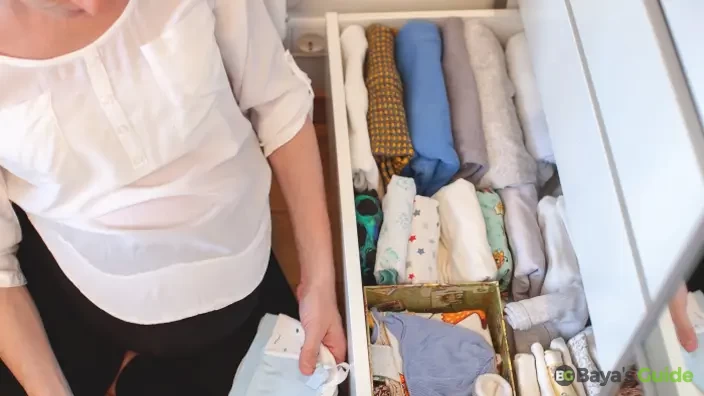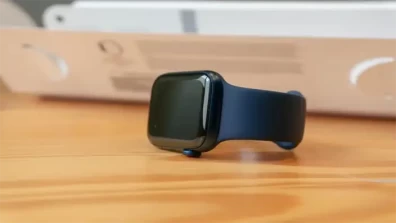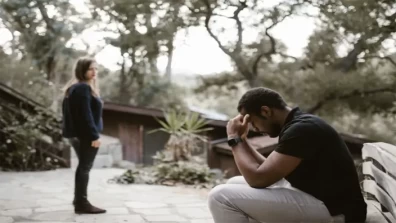Welcoming a new addition to the family brings joy and excitement, accompanied by a wave of adorable baby clothes. As your little one grows, you'll find yourself navigating an ever-expanding wardrobe filled with tiny onesies, booties, and outfits. Properly storing baby clothes not only keeps them organized but also ensures they remain in pristine condition for future use or sentimental keepsakes.
This is an issue, every parent is suffering and seen asking the solution ‘How to store baby clothes” as these clothes are in plenty and variety from baby’s outfits to clothing shoes, handkerchiefs, and small blankets. So, the clothes should be in an organized store so that you can drag a dress that you need for the next baby or donation. Otherwise, all the piles of dresses are tossed down as soon as you open the closet.
Table of Contents
- Organizing Baby's Wardrobe - A Guide To Storing Tiny Attire
- 1- Clean & Sort
- 2- Launder Everything
- 3- Sort By Size
- 4- Sort Out Only Worth Keeping Clothes
- 5- Fold Clothes Compactly
- 6- Use Airtight Containers
- 7- Consider Climate Control
- 8- Choose Appropriate Hangers
- 9- Use Drawer Dividers For Small Items
- 10- Rotate Seasonal Items
- 11- Avoid Plastic Bags For Long-Term Storage
- 12- Pack Inside Storage Totes
- 13- Labeling Systems
- 14- Store The Packed Containers In The Basement OR Attic
- 15- Organize The Containers By Size
- 16- Donate OR Pass On Unwanted Items
- 17- Ideal Environment For Storage
- Choosing The Right Storage Containers
- The Art Of Purging: Managing Your Baby's Clothes
- Frequently Asked Questions
- Conclusion
Organizing Baby's Wardrobe - A Guide To Storing Tiny Attire
In this guide, we'll explore practical tips and strategies to store baby clothes efficiently, allowing you to cherish these precious garments and pass them on to others in the years to come.
1- Clean & Sort
Before storing baby clothes, make sure they are freshly laundered. This helps prevent stains from getting out and keeps the clothes free of any lingering odors. Sort clothes by size to streamline the storage process.
2- Launder Everything
The 1st step before you begin sorting and storing the baby clothes, you need to wash and dry them thoroughly. Later, you will decide whether you want to keep the clothes at home or wish to donate them. In both cases, you should have to organize ready to be in the boxes.
3- Sort By Size
Don’t set the clothes in a pile as you hold them. Always organize the clothes of your outgrown baby by size. Sort through all baby items in order and place them in the correct pile.
4- Sort Out Only Worth Keeping Clothes
After placing the baby clothes in an organized pile from the biggest to the smallest size, you need to scrutinize to decide which dresses are not worth keeping. For that function, place all the items that you don’t love in a separate box so that packing will be easier later.
5- Fold Clothes Compactly
Once you have sorted out and arranged all types of your baby’s clothing items, the next necessary step you need to take is to settle them in a folding form.
- Fold the item in the same shape which is the same-sized or similar in use.
- For the items that are in height, fold them to a height so that they can stay fit under-bed storage boxes.
6- Use Airtight Containers
Invest in airtight plastic containers or vacuum-sealed bags. These containers protect clothes from dust, moisture, and potential pests, preserving their quality during storage. Clearly label each container with the clothing sizes contained within.
7- Consider Climate Control
If storing baby clothes in an attic, basement, or garage, be mindful of temperature and humidity changes. Extreme conditions can damage fabrics over time. Opt for a cool, dry environment to safeguard the integrity of the garments.
8- Choose Appropriate Hangers
For clothes that are better stored on hangers, use child-sized or slim velvet hangers to prevent stretching or misshaping. Hang delicate items like dresses or special outfits to maintain their form.
If you have special occasion outfits or delicate dresses, consider hanging them in garment bags to maintain their shape and prevent wrinkles.
9- Use Drawer Dividers For Small Items
Utilize drawer dividers for smaller accessories like socks, hats, and mittens. This not only keeps these items organized but also makes it easier to locate what you need without rummaging through drawers.
10- Rotate Seasonal Items
Periodically revisit your stored baby clothes. Assess what your child has outgrown and rotate the items to ensure you're only keeping what is relevant and in good condition.
By following these tips, you can effectively store your outgrown baby clothes, preserving them for future use or passing them on to others. This approach not only keeps your storage space organized but also ensures that the clothes remain in excellent condition for the next little one who may wear them.
11- Avoid Plastic Bags For Long-Term Storage
While plastic bags may seem like a quick solution, they can trap moisture and potentially damage fabrics over time. Opt for breathable storage solutions that protect clothes without compromising their quality.
12- Pack Inside Storage Totes
As per the need of the time, large plastic storage totes are available in the market, or you may order online from some authentic site. In this function, after sorting out and labeling the clothes as per their size, you are ready to place them away in the storage totes. First, fill the first storage tote then move to the next to pack all the baby clothes and toys which are out of use now. Surely, you will feel convenient to pick and drag them out from the basement whenever you need to donate or to pass them on to some family fellow.
13- Labeling Systems
Employ a labeling system for storage containers or drawers. Marked labels help you quickly identify the contents, making it efficient to retrieve specific sizes or seasonal items when needed.
14- Store The Packed Containers In The Basement OR Attic
Select and clean the room to save your outgrown baby clothes. The room in the basement or spot in the attic or garage space you have selected for the storage of the outgrown baby clothes should be free from moisture.
15- Organize The Containers By Size
You need to be very organized while keeping all types of clothing items of your outgrown babies. Place the baby's clothing bins from small size to the next size up so that the things will not get messy while you need to drag one out of others. Once you have placed all the clothing boxes organized after packing all baby items in order as per size, this way the transitions will be easier for you in the future.
16- Donate OR Pass On Unwanted Items
If you know you won't be using certain items again, consider donating them or passing them on to friends or family. This not only declutters your storage but also helps others in need.
17- Ideal Environment For Storage
Choose a storage location that is cool and dry. Avoid places with extreme temperature changes, as this can impact the quality of fabrics over time.
Choosing The Right Storage Containers
When selecting storage containers for your baby's items, consider the following factors:
- Size- I prefer choosing storage containers offline, determining the size by viewing images. Ensure the bag is spacious enough for clothes, baby shoes, toys, and other essentials.
- Sturdiness - Opt for boxes with lids, allowing easy stacking. This ensures stability when storing them on top of each other.
- Dust & Dirt Resistance - Avoid cute or patterned boxes; prioritize containers that protect baby clothes from dirt. Opt for outer layers that are easy to wipe in case of stains.
- Clear Bins - While design is a personal preference, I recommend clear bins. This allows for easy labeling, helping you identify the contents inside.
Discover More: How To Catch A Rat In The House
The Art Of Purging: Managing Your Baby's Clothes
The frequency of purging your baby's clothes depends on various factors, including the growth rate of your child, changing seasons, and your storage space. Here are some general guidelines:
1- Growth Milestones
Purge baby clothes as your child reaches significant growth milestones. Babies grow quickly, and clothes that once fit well may become too small. Regularly assess the fitness of clothes to identify items that need to be replaced with larger sizes.
2- Seasonal Changes
Consider purging and organizing baby clothes seasonally. As the weather shifts, assess whether your child will need different types of clothing. This helps you keep the wardrobe relevant and ensures you have appropriate outfits for each season.
3- Unused OR Unworn Items
If you notice that certain items consistently go unworn, consider purging them. Babies often receive more clothes than they can wear, and some items may never be used. Donating or passing on gently used clothing can be a thoughtful way to declutter.
4- Stains OR Wear & Tear
Regularly inspect baby clothes for stains, wear, or damage. If an item is stained beyond repair or has significant wear, it may be time to part with it. Keeping clothes in good condition ensures they can be enjoyed by others or used for future siblings.
5- Outgrown Items
Purge clothes that your baby has outgrown. Keeping too small clothes takes up valuable storage space. Donate or pass on outgrown items to make room for larger sizes.
6- Storage Limitations
If your storage space is limited, consider purging more frequently to avoid overcrowding. This helps you maintain an organized and accessible wardrobe for your baby.
7- Special Occasions
Evaluate whether you have clothing for special occasions (e.g., weddings, holidays). If not, consider purchasing or receiving such items as gifts when the need arises.
In summary, purging baby clothes is a dynamic process that depends on your child's growth, changing seasons, and your storage capacity. Regular assessments, especially during growth spurts, can help you keep the baby's wardrobe functional, organized, and clutter-free.
Frequently Asked Questions
How Many Outfits Does A Baby Need?
Needless to say, it is absolutely up to your choice and your baby’s needs but don’t buy loads of baby clothes which you don't actually need. It also depends upon a routine that how quickly you get your baby’s clothes washed and change the new dresses with other accessories. It’s a matter of fact that, usually mothers may change their baby’s garments four or five times a day through that you can perceive the idea of how many outfits your baby needs. Make sure that the first clothes your baby has worn may hardly be worn three to four times only, as babies grow very quickly. So have arrangements to set them in an organized form mentioned above.
Is It Better To Hang Or Fold Baby Clothes?
The first thing is to store your baby’s clothes to fold them. Only the upper outfits can be kept in onesie form. A great way to save your garments is you sort them through dressers rather than hangers.
Should You Store Baby Clothes In Boxes OR Plastic?
Cardboard boxes are comprised of papers or pulp trees. The paper or cardboard materials incline to moisture and start to break down gradually. On the contrary, plastic boxes are water-resistant protecting your outgrown baby’s garments from getting damped forever. Moreover, plastic containers come with lids or gasket seals to keep your accessories away from dirt, dust, and pests as well.
Conclusion
In conclusion, mastering the art of storing baby clothes is not only about maintaining an organized space but also about preserving the memories and practicality that come with each tiny garment. By implementing effective storage strategies such as cleaning and sorting, using airtight containers, and labeling meticulously, parents can ensure that their baby's wardrobe remains in pristine condition for future use or sentimental keepsakes.
The process involves a careful balance of practicality and sentimentality, allowing families to cherish these fleeting moments of infancy while staying well-prepared for the future. So, as you embark on the journey of storing your baby's clothes, remember that a well-organized wardrobe is not just a matter of tidiness but a testament to the love and care woven into each fabric, stitching together the precious tapestry of your child's early years.























